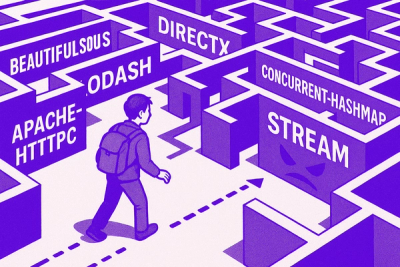
Research
NPM targeted by malware campaign mimicking familiar library names
Socket uncovered npm malware campaign mimicking popular Node.js libraries and packages from other ecosystems; packages steal data and execute remote code.
mongoose-silo
Advanced tools
mongoose-silo eases the creation of multi-tenant apps by providing a wrapper around mongoose that handles the multi-tenancy for you. It works by siloing your data accross seperate databases, one per each tenant.
mongose-silo:
// Initialize `mongose-silo` with the main and tenant models
const silo = Silo.initialize('mydb', 'Admin', modelsPath)
// Switch to the database for tenant `tenantId`
silo.switch(tenantId)
// Obtains a connection to the current database
db = () => silo.getCurrentODM()
// Create a mongo document for the current tenant
orgADashboard = db().model(“Dashboard”).create(…)
# run seeders for a specific tenant
# `--tenant` here` is optional, if not provided, seeders will be run for all tenants
db:seed --seed <seed-name> --tenant <tenant-name>
# run all seeders, either for all tenants or for a specific tenant
db:seed:all
# Clone our repo
git clone https://github.com/techoutlooks/mongoose-silo \
&& DOWNLOAD_DIR="$PWD/mongoose-silo"
# Run following from your project dir
npm i --save $DOWNLOAD_DIR
# It is the responsibility of user code to export the Mongo db uri
export MONGO_URL=mongodb://localhost:27017/leeram-erp?authSource=admin
mongose-silo, ideally in your models/index.js directory.// models/index.js
require('mongose-silo')
const silo = Silo.initialize('mydb', 'Admin', modelsPath)
module.exports = {
silo,
db: () => silo.getCurrentODM(),
tenantify: tenantify(silo),
singlify: singlify(silo)
}
mongose.model(name, schema).
The Silo.initialize() static factory inside mongose-silo walks your modelsPath directory,
compiles your schemas, and registers them with every tenant database, automagically.
const Dashboard = mongoose.model('Dashboard', Schema({
title: String }));
// THE CHANGE: instead of registering your model yourself,
// simply expose your schema like so:
module.exports = { name: 'Dashboard', schema: yourSchema }
Remember models/schemas were pulled up automatically from the modelsPath directory and compiled, when initializing the library. You need not importing mongoose anymore.
In your controllers, replace code that looks like:
const mongoose = require('mongoose');
const Org = mongoose.model('Org');
with:
const { silo, db, singlify } = require('@/models')
const Org = db().model('Org'); // way 1
const Org = db().Org; // way 2
Full example:
const tenantId = 'orgA'
const { silo, db, singlify } = require('@/models/index')
silo.switch(tenantId)
await db().Dashboard.create({
title: 'Org A - Weekly report' })
This is meant for tenant-unaware REST calls;
ie., GET with no X-Tenant-Id header, nor silo-tenant-id cookie set on the request.
Below example, a trivial usecase, creates an org tenant. It uses the singlify middleware to create a route with multitenancy that:
modelsPath directory per each tenant.
app.post('/org', tenantify, async (req, res) => {
const { name, domain } = req.body
const tenant = await silo.createTenant(domain)
silo.switch(tenant.subdomain)
const org = await db().Org.create({
name, domain
})
res.status(201).json({
org
})
})
Use the tenantify middleware to switch the database context
to the tenant identified in the request:
app.get('/dashboard', tenantify, async (req, res) => {
const dashboards = await db().Dashboard.findAll()
res.status(200).json({
dashboards
})
})
FAQs
A wrapper around mongose to build multi-tenant applications.
The npm package mongoose-silo receives a total of 2 weekly downloads. As such, mongoose-silo popularity was classified as not popular.
We found that mongoose-silo demonstrated a not healthy version release cadence and project activity because the last version was released a year ago. It has 1 open source maintainer collaborating on the project.
Did you know?

Socket for GitHub automatically highlights issues in each pull request and monitors the health of all your open source dependencies. Discover the contents of your packages and block harmful activity before you install or update your dependencies.

Research
Socket uncovered npm malware campaign mimicking popular Node.js libraries and packages from other ecosystems; packages steal data and execute remote code.

Research
Socket's research uncovers three dangerous Go modules that contain obfuscated disk-wiping malware, threatening complete data loss.

Research
Socket uncovers malicious packages on PyPI using Gmail's SMTP protocol for command and control (C2) to exfiltrate data and execute commands.